A growing number of discerning buyers are turning toward LED panel lights to illuminate their homes and businesses. LED panel lights are constructed with low-weight aluminum frames and diffusers. These lights are a low-weight, elegant illumination solution for lighting. Further, they don’t require an obstructive installation or much energy to turn on. As a result, LED panel lights have become one of the most popular choices for creating stylish, interior lighting.
Benefits of LED Panel Lights
LED panel lights deliver many benefits. In contrast to linear lights or down lights, these installations produce light with large illumination panels so light is distributed and diffused in evenly spread manner. The lighting in the room will appear smooth with no distracting dark spots or overly brightened sections. Further, the evenly diffused light produces less glare and is more pleasing to the eyes.
In terms of energy efficiency, LED panels have a significant advantage over legacy lighting systems because they produce much more lumens per watt of energy used.
Another advantage of LED panel lights is that they last a very long time. This means you won’t have to spend money on maintenance or replacement panels for years. Many LEDs on the market can easily last 30,000 hours, or over a decade under common use.
One of the most popular features of LED panels is their slim look and feel. They are a great choice for those going for a minimalist, contemporary style in their lighting arrangement. The panels don’t stick out, are unobtrusive and you won’t even notice them unless they are turned on. LED panels are truly a dream-come-true lighting system based on their many attributes.
Important Specs of LED Panel Lights
Lumens and Watts
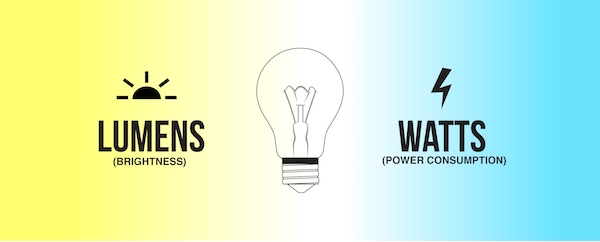
An important spec to review, lumens are a measurement of the total amount of light emitted from a light source. However, please note that when measuring the brightness of an area such as a working table, a checkout counter or a reading surface, footcandle or lux is used. As a general guide, below is a table of brightness level recommended by AZ/NZS 1680.1:2006 (a commonly-used lighting standard) for different types of activities:
Class of Task | Recommended Illuminance | Activities |
Movement / Orientation | 40 lux | Corridors, walkways |
Rough intermittent | 80 lux | Loading bays, locker rooms |
Simple work | 160 lux | Canteens, entrance halls |
Moderate easy | 240 lux | Cashier counters, food preparation |
Moderate difficult | 320 - 400 lux | Reading, writing and office tasks |
Difficult | 600 lux | Drawing boards, inspection tasks |
Very difficult | 800 lux | Fine inspection |
Extremely difficult | 1200 lux | Graphic art inspection, hand tailoring |
Exceptionally difficult | 1600 lux | Jewellery and watch making |
Wattage measures how much energy is consumed by a light source. Although it is still used in LED lighting products, it does not reflect the actual brightness of the light like it did for incandescent bulbs. Wattage can be calculated with lumens (lumens per watt) to measure the energy efficiency of a LED light fixture. Compared to old fluorescent tubes, LED panel lights deliver more light while using less energy, meaning that they produce more lumens per watt and are more energy efficient.
Unified Glare Rating (UGR)

Visual comfort is crucial in office, classroom, hospital, and other applications. Over excessive brightness, known as glare, can be visually uncomfortable. Small, bright sources of light typically emit glare — both direct and indirect. Indirect or reflected glare normally results from a reflection off interior surfaces. Glare is a measurable phenomenon, which is determined using a formula. To measure glare, we use the Unified Glare Rating (UGR), which is the luminance of the light source divided by the background luminance of the room. The UGR ranges from 5 to 40, with a lower number being desirable because it represents less glare. Good LED panel lights normally produce less than 20 UGR of glare.
Types of LED panel lights
Depending on your needs, there are a variety of types of LED panels that you can choose from. In the most basic installations, LED panels are used for general lighting with limited adjustability. However, LED chips can produce nearly limitless varieties of light and LED panels have different designs and capabilities.
Here are a few of the common types of LED panels:
Rectangular / Square Panels
Most LED panels are shaped in either square or rectangular dimensions. These dimensions include 300x300, 600x600, 600x1200, and 300x1200. You can choose one of these sizes based on how large the fluorescent installation was that you’re replacing and/or your existing ceiling grid.
Round Panels
Round LED panel lights are often installed in suspended lighting setups. It’s a popular choice of panel lighting because it offers low-profile installation with attractive, bright light. These LED panels come in various diameters depending on your needs.
Edge-lit Panels
In edge-lit panels, the light source is placed around the panel. The light enters the panel on the side and shines out from the surface of the panel. Edge-lit panels are designed for drop-in ceiling panels and are the most popular type of LED panel light.
Back-lit Panels
Backlit panel lights work with the LED light sources at the back of the panel. These panels work for deeper troffer sorts of lighting installation. Backlit panels will project light forward across the light panel from the front.
White Light LED Panels
White light is the most common form of lighting and therefore it’s not a surprise that white light panels are the most popular type of LED panel. They produce general room lighting, but will keep energy and maintenance costs to a minimum.
RGB Colour Changing LED Panels
In addition to general lighting, LED panels can be used for creative lighting options that can be changed via remote control. They can be used on ceilings to change the lighting, or mounted to a wall where the panels themselves become the main attraction.
Temperature and Brightness Adjustable LED Panels
These panels offer a full spectrum of white light. They can be adjusted from warm incandescent-style light to cooler fluorescent-style lighting via remote controls. Further, in many cases, these lights can be dimmed up or down to meet the brightness requirements at hand.
Installation Types
There are three basic ways to install LED panels. Each method, or a combination of methods, is appropriate based on your individual lighting requirements. Here are the different type of LED panel installations:
Suspended LED Panels
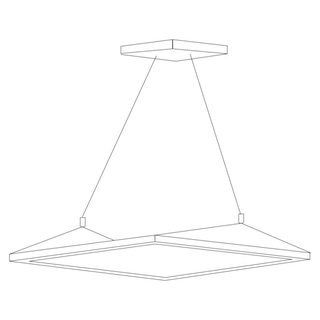
LED panel lights can be installed to the ceiling or suspended under by using a mounting body. Ceiling suspended panels will diffuse soft, even light across the entire space. To install a suspended panel installation, you need to mount a suspension unit to the LED panel light. Then you hang the light from the ceiling with cables. For example, suspension installations are often used for aquarium lighting.
Surface-mounted LED panels
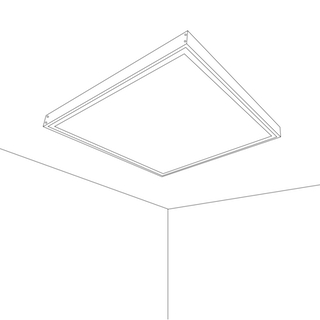
Ceiling mounting is a common and easy way to install panel lighting. To do it, place several holes for screws in the surface you plan to mount to. Then mount a frame, and screw the four sides down.
Recessed LED panels

Recessed lighting is one of the most popular ways to install LED panels. For instance, many panels are designed to drop right into a traditional ceiling grid system. Panels can also just as easily be embedded into walls. To install a recessed LED panel, make sure you have the right dimensions to fit in the gap and the thickness of the surface you’re embedding into.
Applications
LED panels are appropriate for a wide range of applications including both commercial and residential settings. Here are a few of the most common application where you will find LED panels lights.
Offices

Using LED panels in the office is one way to show your workplace is ahead of the pack. Not only that, but it will enhance the workplace for employees on a daily basis by creating low-glare, enjoyable lighting.
Conference and Seminar Rooms
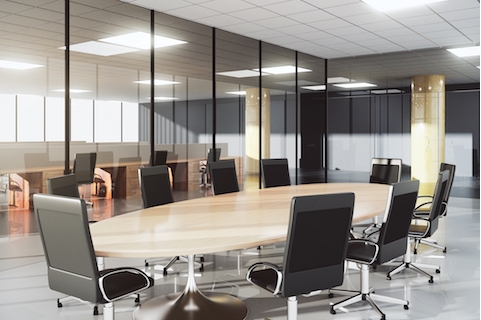
For many of the same reasons that LED panels work well in the office, they’re also a top choice for conference and seminar rooms. In contrast to fluorescent options, they can be turned on and off without lowering the light’s lifespan.
Auditorium
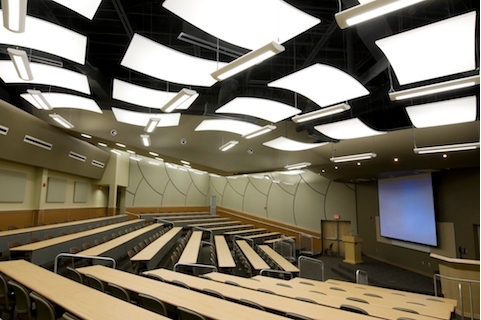
While each LED panel emits less light than a LED downlight, if enough are installed, they can be used to illuminate large spaces. Auditoriums are just one of the many uses for LED panels. Many auditoriums elect dimmable LED panels for maximum control of the lighting environment.
Multi-purpose Halls

For multi-purpose halls, you need flexible lighting that can serve various purposes. LED panels are an excellent selection based on their ability to adjust for any given demand.
Education

LED panels work wonders in the classroom. It’s important to create the right lighting environment when teaching children. It will keep them focused and engaged in the class. LED panel lights also lower energy bills for budget conscious administrations.
Hospital
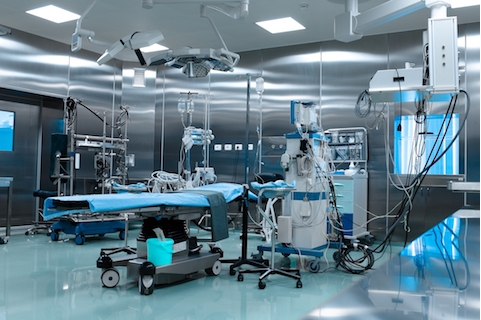
Creating restorative lighting for hospital patients is easy with LED panels. With these panels, you have much more control over the environment. The energy and cost-saving features also make these lighting systems popular.